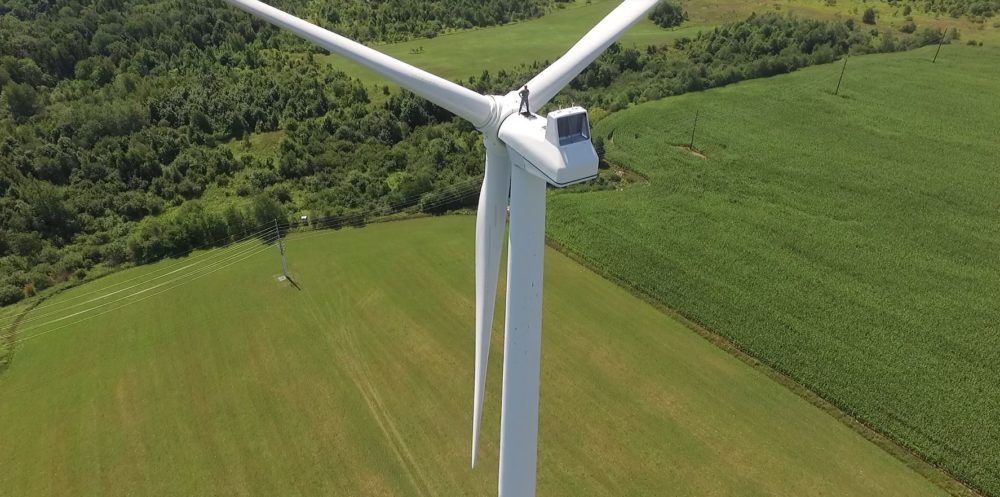President Trump came to Cedar Rapids, Iowa last week for a rally and talked about putting solar panels on his border wall (even though there are 68.4 million better places for solar). Perhaps even more outrageous was how he bashed the wind industry that has invested nearly $14 billion in the state, and that employs thousands of workers in the operations, maintenance, construction, and manufacturing sectors. In 2016 alone, the industry supported over 8,000 direct and indirect jobs in Iowa.
He also stated “we’re going to be strong for the future”. Well, Mr. President, we, and Iowans in particular, are going to be strong because of the growth of wind energy, not despite of it. Let’s look at all the ways Trump’s comments on wind are misinformed.
Wind is king in Iowa
According to the American Wind Energy Association (AWEA) Iowa is ranked second only to Texas for installed wind capacity in the United States. Wind makes up more than 36 percent of Iowa’s in-state energy production, with over 6,900 megawatts (MW) of installed capacity.
Politicians from both sides of the aisle in Iowa are supportive of wind energy. Wind is a reliable energy source, and it helps build a more reliable and balanced electricity portfolio. The electric industry knows this, as evidenced by MidAmerican Energy’s decision to invest $3.6 billion in developing wind energy, with the goal of eventually producing 100 percent of their energy from renewable sources.
The utility’s adoption of wind has helped make its rates among the lowest in the country. Because of low rates and clean energy sources, Iowa has also become an attractive state for tech companies such as Google and Microsoft. Businesses are committed to powering their companies with renewable energy, and working to greatly increase the demand for it.
The rise of wind
The truth is wind energy is on the rise, not just in Iowa but throughout the country, including heavy investment in the Midwest. Wind capacity has more than doubled in the United States since 2010, accounting for nearly one-third of all new generating capacity installed since 2007. And wind power now makes up 5.5 percent of the nation’s total electricity generation.
The rise of wind is also bringing economic development in areas that need it, with seventy percent of US turbines located in low-income rural areas.
Rural communities benefit
Wind projects provide extra income for farmers and ranchers in rural communities and have proven to be a boon to local school districts. Wind projects significantly increase local tax bases and may even increase property value.
Wind projects also produce lease payments, with an estimated $245 million a year in lease payments going to rural landowners a year. The steady income that comes with lease payments helps landowners and farmers when bad weather strikes or commodity prices fluctuate. Wind energy is the new cash crop in rural America.
Can’t stop won’t stop
Renewable energy prices are falling; investing in renewable energy just makes sense. And in the United States, wind industry jobs are on the rise, up 28 percent from 2015, with the industry producing approximately 102,500 jobs in 2016.
At the end of the day, despite all the negative attacks and rhetoric on clean energy in the recent months at the federal level, clean energy momentum is happening, especially in the Midwest—and it’s not going to stop.

